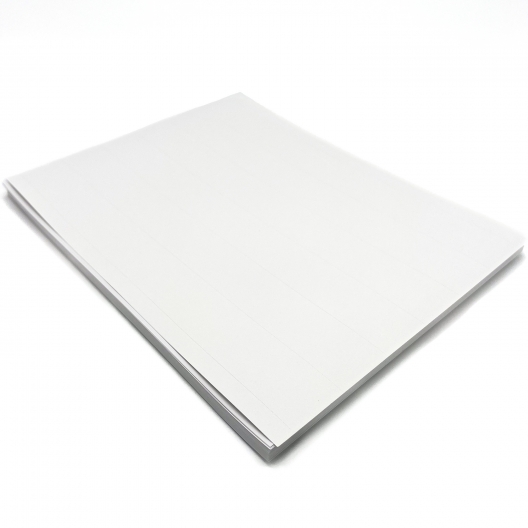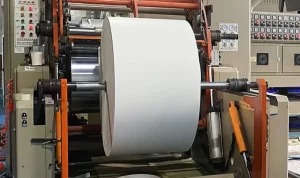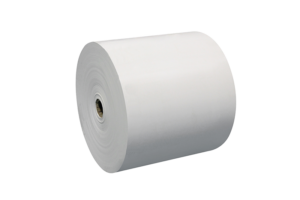What Are the Uses of White Offset Paper?
Here is the revised blog with the images added and tables inserted:
Everything You Need to Know About White Offset Paper
Understanding White Offset Paper
White offset paper is a versatile and widely used type of paper in the printing industry. It is specifically designed for offset printing, a popular printing method used in producing high-quality prints for various purposes. In this section, we will delve into the key aspects of white offset paper, including its definition, differences from coated paper, and common applications.
What is White Offset Paper?
White offset paper is an uncoated paper commonly used in offset printing, which is a widely used commercial printing method. It is known for its excellent printability and versatility, making it suitable for various applications such as brochures, catalogs, business stationery, and more.
White offset paper is made from wood pulp and does not have any additional coatings or finishes. This gives it a natural and uncoated surface, which enhances its absorbency and allows for better ink penetration during the printing process. This results in crisp and vibrant prints, with excellent detail and clarity.
How is White Offset Paper Different from Coated Paper?
One of the main differences between white offset paper and coated paper lies in their surface characteristics. White offset paper has a natural and uncoated surface, while coated paper has a layer of coating applied to its surface. This coating is typically made from clay or other additives, which gives coated paper a smoother and glossier finish.
The key advantage of white offset paper is its excellent ink absorption and quick drying time. This makes it ideal for offset printing, as the ink dries faster and allows for efficient printing and production processes. On the other hand, coated paper offers a more polished and glossy appearance, which can enhance the visual appeal of printed materials. Coated paper is often preferred for projects where a high-quality and professional finish is desired.
What Are the Common Uses of White Offset Paper?
White offset paper is used for a wide range of applications in the printing industry. Its versatility and excellent printability make it a popular choice for many businesses and individuals. Some common uses of white offset paper include:
- Business Stationery: White offset paper is often used for letterheads, envelopes, and business cards, providing a professional and clean look.
- Brochures and Flyers: Due to its excellent print quality, white offset paper is commonly used for producing brochures, flyers, and other promotional materials. The ability to showcase vibrant colors and intricate details makes it an ideal choice for marketing purposes.
- Catalogs and Magazines: White offset paper is frequently used for creating catalogs and magazines, as it enables clear and readable texts, high-quality images, and a premium feel.
- Books and Manuals: Many books and manuals are printed on white offset paper due to its durability, cost-effectiveness, and the ability to handle large quantities of text.
- Direct Mail: White offset paper is often used for direct mail marketing campaigns, as it provides a professional look while allowing for efficient printing and customization.
- Office Documents: White offset paper is commonly used for everyday office documents such as reports, memos, and presentations. Its high-quality printability ensures clear and legible text.
In summary, white offset paper is a versatile and widely used type of paper for offset printing. Its natural and uncoated surface, excellent ink absorption, and quick drying time make it ideal for producing high-quality prints for various purposes. Whether it’s for business stationery, marketing materials, books, or office documents, white offset paper provides a reliable and cost-effective solution.
Features and Specifications of White Offset Paper
White offset paper is a versatile and widely used type of paper known for its exceptional printing and writing capabilities. It offers a range of features and specifications that make it suitable for various applications. In this section, we will explore the weight and thickness options, brightness levels, smoothness and finish variations, as well as the availability of white offset paper in different sizes.
Weight and Thickness Options of White Offset Paper
White offset paper comes in a variety of weight and thickness options to cater to different needs. The weight of paper is measured in pounds (lb) or grams per square meter (GSM). The common weight options for white offset paper include 60#, 70#, and 80#. Each weight signifies the sturdiness and thickness of the paper.
| Weight | Description | Common Applications |
|---|---|---|
| 60# | Lightweight and suitable for everyday printing needs | Brochures, flyers, promotional materials |
| 70# | Slightly thicker paper with increased rigidity and durability | Business cards, postcards |
| 80# | Provides excellent strength and thickness | Books, manuals, high-quality projects |
Brightness Levels in White Offset Paper
Brightness is an important consideration when selecting white offset paper. Brightness refers to the amount of light reflected by the paper and is measured on a scale of 1 to 100. The higher the brightness level, the more vibrant and vivid the printed colors will appear.
White offset paper typically comes with different brightness levels ranging from 92 to 97. A brightness level of 92 is considered standard and offers good contrast for text and images. This level is well-suited for general office use and printing basic documents.
If you require a higher level of brightness to enhance the appearance of your printed materials, white offset paper with a brightness level of 97 is recommended. This level of brightness provides optimal contrast and makes colors appear more vibrant and crisp. It is particularly suitable for projects that require high-quality graphics, such as presentations or brochures.
Smoothness and Finish Variations
The smoothness and finish of white offset paper play a significant role in determining the overall appearance and quality of printed materials. White offset paper is available in various finishes, including matte and glossy.
- Matte finish: White offset paper with a matte finish has a non-glossy surface. This finish is ideal for projects that require a more refined and elegant look. It minimizes glare and provides a smooth texture that enhances readability and ensures clarity of printed text.
- Glossy finish: White offset paper with a glossy finish has a reflective surface that gives a polished and shiny appearance. This finish is commonly used for projects that require vibrant and attention-grabbing visuals, such as flyers, posters, or magazine covers.
Availability of White Offset Paper in Different Sizes
White offset paper is available in various sizes to accommodate different printing needs. The most common size for white offset paper is 8.5 x 11 inches, which is the standard letter size. This size is widely used in offices and households for everyday printing purposes.
In addition to the standard letter size, white offset paper is also available in other sizes such as legal size (8.5 x 14 inches) and tabloid size (11 x 17 inches). These larger sizes are commonly used for posters, banners, and other large-format printing projects.
It’s worth noting that white offset paper is also available in custom sizes to cater to specific requirements. Many paper suppliers and manufacturers offer custom cutting services, allowing customers to order white offset paper in their desired dimensions.
In conclusion, white offset paper offers a range of features and specifications that make it a popular choice for various printing projects. Its weight and thickness options, brightness levels, smoothness and finish variations, as well as availability in different sizes, provide versatility for different applications. Whether you need a lightweight paper for everyday printing or a heavier stock for more professional projects, white offset paper is a reliable and high-quality option to consider.
Benefits and Applications of White Offset Paper
Offset printing is a widely used printing technique that involves transferring ink onto a rubber roller, which then transfers the ink onto the printing surface. The use of white offset paper in this process offers numerous benefits and applications. In this section, we will explore the environmental benefits of using white offset paper, the printing techniques compatible with it, best practices for printing on this type of paper, and provide examples of projects suitable for white offset paper.
Environmental Benefits of Using White Offset Paper
One of the key advantages of white offset paper is its eco-friendly nature. Many manufacturers, like Husky and Williamsburg, produce white offset paper that is Sustainable Forestry Initiative-certified, indicating that the paper is made from responsibly managed forests. This certification ensures that the paper comes from sustainable sources, contributing to the conservation of our natural resources.
In addition to being sourced sustainably, white offset paper is often made from recycled content. For example, the Williamsburg Offset 70 Paper is made from 30% post-consumer recycled content, appealing to eco-conscious consumers. By using white offset paper with recycled content, you can reduce your carbon footprint and promote a more sustainable printing process.
Printing Techniques Compatible with White Offset Paper
White offset paper is compatible with various printing techniques, making it versatile for different printing needs. It works seamlessly with offset printing, the technique for which it is specifically designed. Offset printing provides high-quality and precise printing results, making it the preferred option for many commercial printing projects.
In addition to offset printing, white offset paper is also compatible with laser and inkjet printing. Laser printing offers fast and efficient printing, making it suitable for high-volume printing jobs. On the other hand, inkjet printing provides vibrant colors and sharp details, making it ideal for projects that require high-quality graphics.
Best Practices for Printing on White Offset Paper
To ensure the best printing results on white offset paper, it is important to follow a few best practices. These practices will help you achieve crisp and professional-looking prints. Here are some tips to keep in mind:
- Prepare your artwork in the correct file format and resolution suitable for your desired printing technique.
- Use the appropriate color profile and calibration settings to ensure accurate color reproduction.
- Adjust the ink density and drying time according to the paper’s absorbency and thickness.
- Conduct test prints and make any necessary adjustments before proceeding with the final print run.
- Handle the paper with care to avoid smudging or damaging the prints during the printing process.
By following these best practices, you can optimize your printing process and achieve outstanding results on white offset paper.
Examples of Projects Suitable for White Offset Paper
White offset paper is well-suited for a wide range of printing projects. Its versatility and high-quality printing capabilities make it a popular choice among businesses and individuals alike. Here are some examples of projects that are suitable for white offset paper:
- Brochures and Flyers: White offset paper’s smooth surface and ability to showcase vibrant colors make it ideal for creating eye-catching brochures and flyers.
- Business Stationery: Whether it’s business cards, letterheads, or envelopes, white offset paper adds a touch of professionalism to your stationery items.
- Catalogs and Magazines: The high-quality printing capabilities of white offset paper make it perfect for producing catalogs and magazines that require sharp images and text.
- Posters and Signs: White offset paper’s sturdiness and ability to handle ink saturation without bleed-through make it suitable for creating visually impactful posters and signs.
- Invitations and Greeting Cards: The smooth finish of white offset paper enhances the overall look and feel of invitations and greeting cards, adding a touch of elegance.
| Project | Description |
|---|---|
| Brochures and Flyers | Eye-catching materials that require vibrant colors and intricate details |
| Business Stationery | Adds a touch of professionalism to letterheads, business cards, and envelopes |
| Catalogs and Magazines | Perfect for producing catalogs and magazines with sharp images and text |
| Posters and Signs | Provides sturdiness and can handle ink saturation without bleed-through |
| Invitations and Cards | Enhances the overall look and feel, adding elegance to invitations and greeting cards |
These are just a few examples of the many projects that can benefit from using white offset paper. Its versatility, high-quality printing capabilities, and eco-friendly nature make it a valuable choice for various printing needs.
In conclusion, white offset paper offers numerous benefits and applications. Its eco-friendly nature, compatibility with different printing techniques, and ability to produce high-quality prints make it a versatile and desirable option for businesses and individuals. By following best practices and exploring different project possibilities, you can take full advantage of the benefits that white offset paper has to offer.
FAQs about White Offset Paper
What is White Offset Paper?
A: White offset paper is an uncoated paper commonly used in offset printing, known for its excellent printability and versatility.
How is White Offset Paper Different from Coated Paper?
A: White offset paper has a natural and uncoated surface, in contrast to the smooth and glossy finish of coated paper.
What Are the Common Uses of White Offset Paper?
A: White offset paper is used for business stationery, brochures, catalogs, books, direct mail, and office documents.
What Are the Weight and Thickness Options of White Offset Paper?
A: White offset paper comes in weights such as 60#, 70#, and 80#, each offering different levels of sturdiness and thickness.
What Are the Best Practices for Printing on White Offset Paper?
A: To achieve the best results, prepare your artwork correctly, use appropriate color profiles, adjust ink density, conduct test prints, and handle the paper with care.
In wrapping up, we covered the ins and outs of white offset paper. Its unique features stand out in printing projects, and the environmental benefits are noteworthy. Remember, choosing the right paper is key to a successful print project. So, next time you’re at the printer, opt for white offset paper for that crisp finish.





